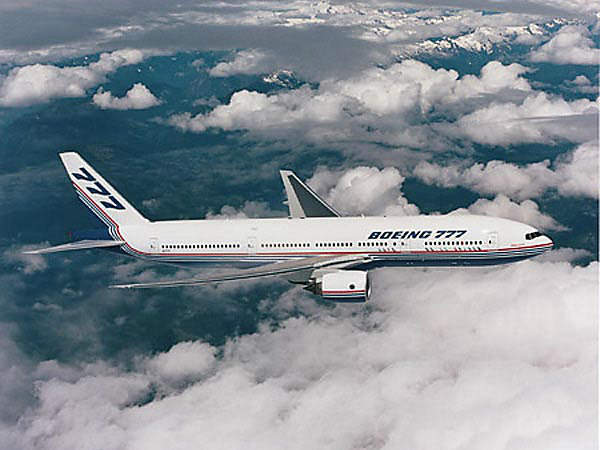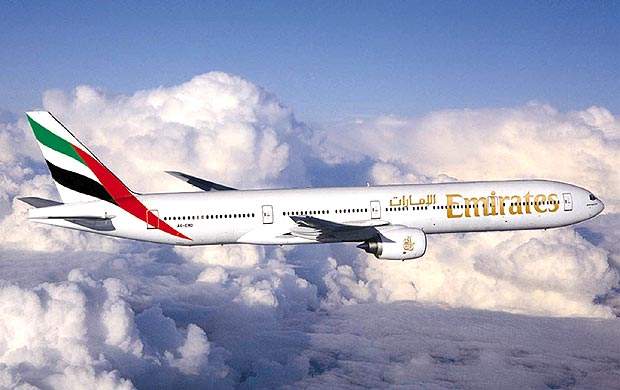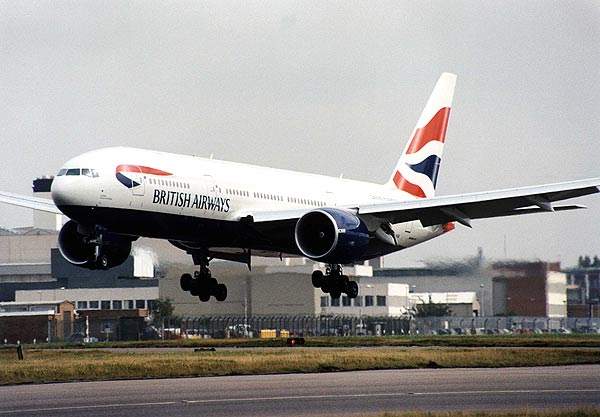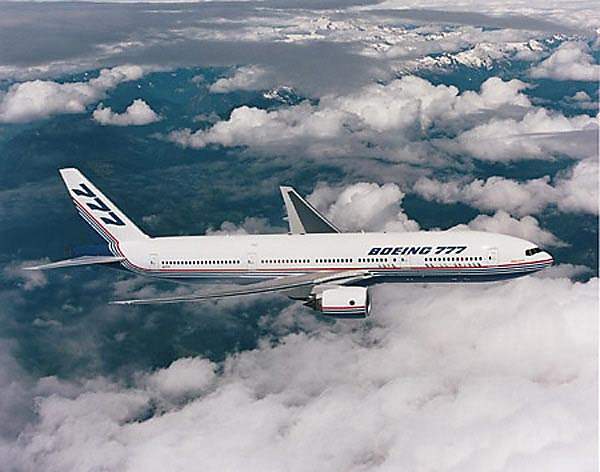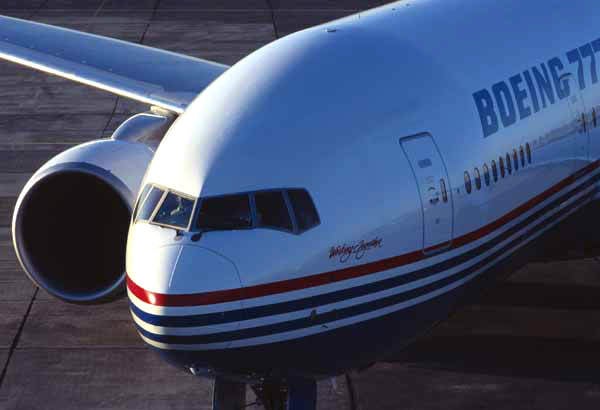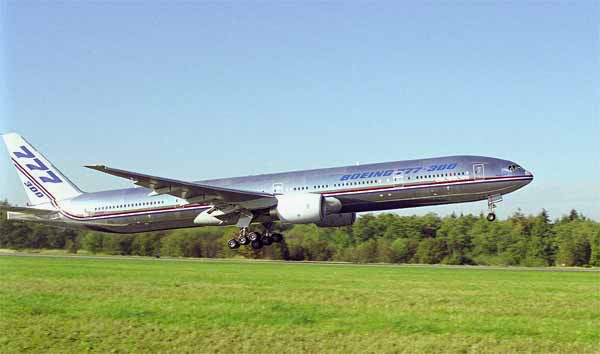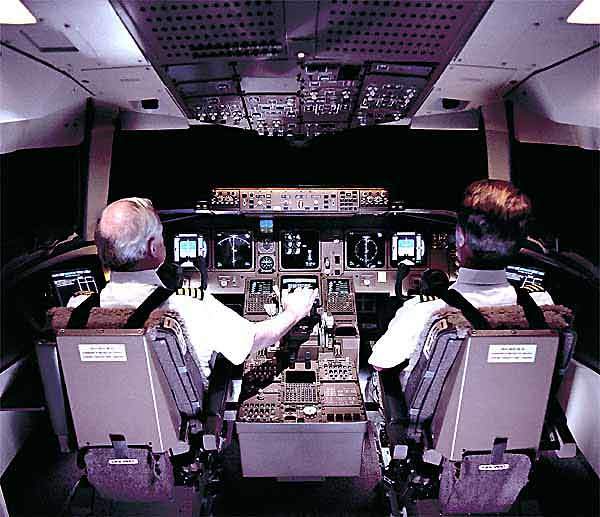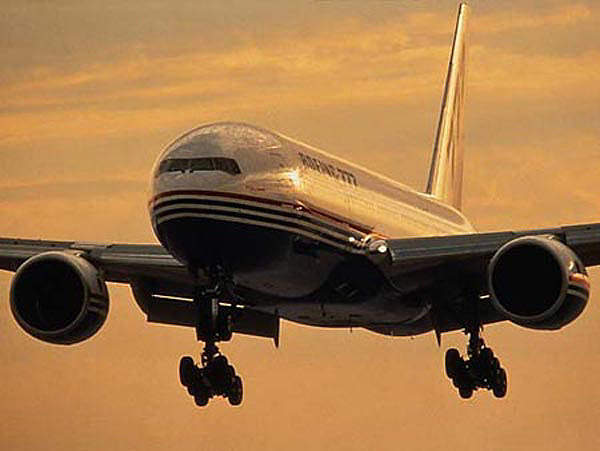The Boeing Commercial Airplanes Group introduced the Boeing 777 family of aircraft in 1989. The aircraft fills the size gap between the Boeing 767 and Boeing 747. The aircraft is built at the Boeing plant in Everett, Washington.
By 2012, Boeing received more than 1,300 orders and built over 1,000 Boeing 777 aircraft for more than 60 customers since the aircraft entered service in May 1995.
The Boeing 777 aircraft is currently being built at a production rate of seven a month and will reach 8.3 aircraft a month by 2013.
Boeing 777-200
The 777-200 was the first of the family of aircraft in production and entered service in May 1995. It has a range of up to 10,900km and seats a maximum of 440 passengers, or between 305 and 328 in a typical three-class configuration. 88 aircraft were delivered and production is complete.
Boeing 777-200ER (extended range)
The 777-200ER (extended range) flies the same number of passengers as the 777-200 but to a range of 14,260km. The aircraft has a higher fuel capacity and strengthened wing, fuselage, engine pylons, landing gear and empennage (tail unit).
The aircraft first flew in October 1996 and first entered service in February 1997 with British Airways. By March 2011, 431 aircraft were ordered and 415 delivered. Boeing received 48 orders for 777 aircraft in April 2011.
Boeing 777-200LR (long-range) Worldliner
The 777-200LR (long-range) Worldliner is an ultra-long-range version, designed to be the longest-range aircraft in the world. The aircraft programme was originally known as the 777-200X and was launched in February 2000. Work on the aircraft was halted in October 2001 but restarted in March 2003. The first flight took place in March 2005.
The range is 17,446km, carrying 301 passengers. The aircraft is powered by two 489kN engines, type General Electric GE90-110B.
An additional fuel tank installed in the rear cargo bay brings the fuel capacity to 195,280l. The aircraft will also be fitted with new raked wingtip extensions.
In November 2005, the 777-200LR Worldliner set a world distance record for a commercial aircraft non-stop flight – 21,601km (11,664nm) from Hong Kong to London Heathrow.
The launch customer was Pakistan International Airlines (PIA), which received the first 777-200LR Worldliner in February 2006. Orders for 55 aircraft have been received including EVA Airways (three), Air India (eight), Qatar Airways, ILFC (two), Jet Airways (six), Emirates (ten), Air Canada (13) and Air India (eight). Qatar Airways signed an agreement worth $501m with Boeing in July 2010 to acquire two additional Boeing 777-200LRs.
In November 2010, Boeing shipped its 900th 777-200LR aircraft to Ethiopian Airlines. The airline received its fifth 777-200LR aircraft in September 2011.
Boeing 777-300 stretched
The Boeing 777-300 is a stretched version of the 777, seating 328 to 394 passengers in a typical three class seating arrangement or 550 passengers in a single economy class arrangement. The 777-300 is the latest derivative of the 777 family and the first aircraft was delivered to Cathay Pacific in May 1998.
Boeing 777-300ER (extended range)
The 777-300ER (extended range) was launched in February 2000 and first flight took place in February 2003. The 300ER set a maximum take-off weight (MTOW) record for a twin-engine aircraft in May 2003.
The aircraft received US and European certification in March 2004 and was delivered in May 2004 to its launch customer, Air France. The higher fuel capacity, compared to the 777-300, provided a range of 13,335km with 359 passengers.
Subsequent improvements to engine efficiency and design changes to reduce drag and weight have increased the range to 14,594km (7,880nm). The aircraft is powered by a new, more powerful GE90-115B engine rated at 511kN (115,000lb). New highly tapered raked wingtip extensions have been fitted to reduce take-off field length, climb performance and fuel efficiency.
Boeing received firm orders for 492 aircraft including Emirates (40), Singapore Airlines (19), International Lease Finance Corp (25), Jet Airways (ten), Cathay Pacific (30), Air Canada (four), Air France (14), ANA (ten), Etihad (five), EVA (12), GE Capital (14), JAL (13), Pakistan International (three), Air India (15), Philippine Airlines (two), Korean Airlines (ten) and Virgin Blue (six). By March 2011, 272 aircraft had been delivered.
Boeing 777F freighter
In May 2005, Boeing launched the 777F freighter with an order for five aircraft plus three options from Air France. The freighter can carry a revenue payload of 103t (229,000lb) up to 9,195km (4,965nm). Boeing rolled out the first 777F in May 2008 and the first flight was in July 2008.
The first 777 freighter was delivered to Air France in February 2009. 83 orders have been received including Air Canada (two), Avion Group (four), Emirates (eight), FedEx (15) and GE Capital (eight).
International customers for the Boeing 777
In September 2010, Boeing received orders from Air China (four 777-300ER) and Cathay Pacific Airways (six 777-300ER). The first 777-300ER, of the 19 aircraft ordered, was delivered to Air China in July 2011.
Turkish Airlines received the first 777-300ER aircraft from Boeing in October 2010. BOC Aviation ordered eight 777-300ER aircraft in November 2010 under a $2.2bn contract.
Boeing was awarded a $3.3bn contract by Saudi Arabia Airlines in November 2010 to supply 12 777-300ERs with an option to procure ten additional aircraft.
Boeing delivered its first 777-900ER to the Korean Air in June 2011.
TAAG Linhas Aereas de Angola (Angola Airlines) received its first 777-300ER aircraft in June 2011. TAAG placed an order for two aircraft in October 2009.
GE Capital Aviation Services (GECAS) placed an order for eight 777-300ER aircraft in August 2011, taking the total orders to 61.
Cathay Pacific placed an order for eight 777 freighters and four 777-300ER aircraft in August 2011. Thai Airways International confirmed the order for six 777-300ER aircraft the same month.
Air Lease Corporation signed a deal with Boeing in August 2011 to purchase five 777-300ER aircraft. Singapore Airlines announced its plan to purchase the 777-300ER aircraft in August 2011.
In August 2011, Boeing delivered the first 777-200LR to Air Austral which is currently operating six 777-300ER aircraft.
TAM Linhas Aereas awarded a $568m contract to Boeing in February 2011 for two 777-300ERs and to purchase rights for two additional aircraft.
Hong Kong Airlines announced its plan in March 2011 to procure six 777Fs, 30 787-9s and two 787-8 aircraft. Boeing signed a $2.8bn deal with Cathay Pacific in March 2011 to supply ten 777-300ERs. Aeroflot Russian Airlines signed a deal with Boeing in March 2011 to procure six 777-300ERs and two 777-200ERs.
Lufthansa selected the Boeing 777F in March 2011 for its air freight operations. In March 2011, GE Capital Aviation Services ordered ten 777-300ER aircraft for $2.8bn.
Qatar Airways received its 25th 777-300ER aircraft from Boeing in April 2011.
Boeing was awarded a $1.4bn contract by Qatar Airways in April 2011 to supply three 777F freighters and two 777-300ER aircraft. The aircraft currently operated by Qatar Airways includes eight 777-200LR, 15 777-300ERs and two 777Fs. Boeing also received an order for six 777-300ER aircraft from the Qatar airways in June 2011.
Boeing 777 cockpit and flight deck
The two-pilot flight deck is fitted with a five-screen electronic flight information system with five, 8in (203mm) colour liquid crystal displays, including two primary flight displays, two navigation displays and an engine indication and crew alerting system (EICAS) display.
The central control panel between the two pilots holds three multipurpose control and display units for the aircraft information management system, systems information, flight management functions, thrust control and communications.
A two-bunk flight crew rest area is installed on the port side of the flight deck. Optional installation is a crew rest module in the underfloor section. The crew rest module houses six bunks and occupies the same floor area as a standard 96in cargo pallet.
The aircraft has Boeing’s fly-by-wire controls with flight envelope protection and automatic pilot and stabilisation functions.
The fly-by-wire system sends back-driven signals to the pilots’ rudder pedals and control columns to provide the pilot with sensory awareness of the activities of the automated systems.
The aircraft has a triple-redundant digital autopilot and flight director designed by Rockwell Collins. The BAE Systems (formerly Marconi Avionics) triple digital primary flight computers provide the control limits and flight envelope protection commands. Each of the three primary flight computers contains three different and separately programmed 32-bit microprocessors, a Motorola, Intel and AMD, to manage the fly-by-wire functions.
The Boeing 777 was the first aircraft with an ARINC 629 digital data bus linked to the main and standby navigation systems. The navigation system includes a Honeywell ADIRS air data and inertial reference system with a six-ring laser gyroscope, a Honeywell terrain collision avoidance system (TCAS) and a Honeywell and BAE Systems 12-channel global positioning system. The aircraft is equipped with a Honeywell all colour weather radar.
The aircraft can be fitted with a Honeywell and Racal satellite communications system.
Construction
Boeing manufactures the flight deck and forward section of the cabin, the wing, tail and the engine nacelles. Boeing subcontracts the manufacture of components and systems, which are transported to Boeing for final assembly and tests. Subcontractors include Alenia in Italy, ASTA in Australia, BAE Systems in the UK, Bombardier Shorts in the UK, Embraer in Brazil, Japanese aerospace companies, Kaman in the US, Korean Air, Northrop Grumman in USA and Singapore Aerospace.
Engines
The aircraft has two pod-mounted turbofan engines below the leading edges of the wings. The General Electric, Pratt & Whitney and Rolls Royce Trent engines are rated at 327kN to 436kN thrust.
The main fuel tanks are installed in the wing torsion box with the reserve and surge tanks on the inboard side of the wing. The fuel capacity of the 777-200 is 117,350l. Smiths Industries supplied the ultrasonic fuel quantity gauge system.
A centre section tank installed in the 777-200ER and the 777-300 increases the fuel capacity to 171,175l. The ultra-long-range aircraft, Boeing 777-200LR has additional fuel tanks in the rear cargo hold to bring the total fuel capacity to 195,285l.
Landing gear
The aircraft has retractable tricycle-type landing gear. Measco and Messieur Bugatti developed the main landing gear under a joint agreement, which features six-wheeled bogies. Control of the steering rear axles is automatically linked to the steering angle of the nose gear.
The main landing gear is fitted with Honeywell Carbenix 4000 brakes. Initial activation of the brakes during taxiing applies the brakes to alternate groups of three wheels only in order to minimise wear on the brakes. The nose gear is twin-wheeled and is steerable.

